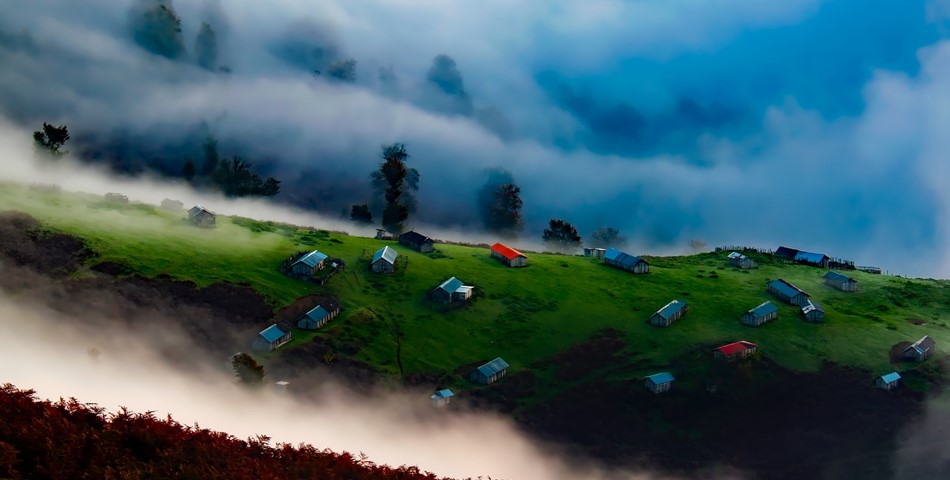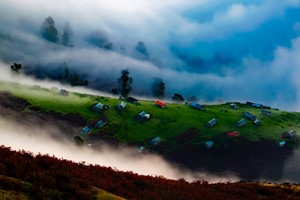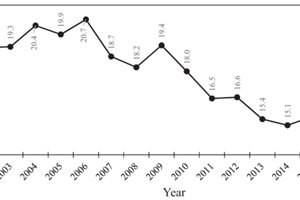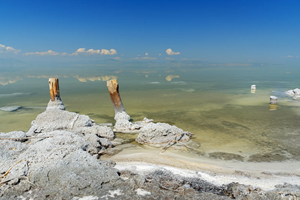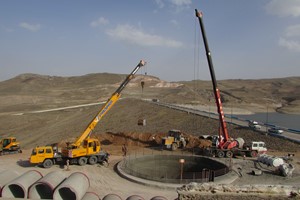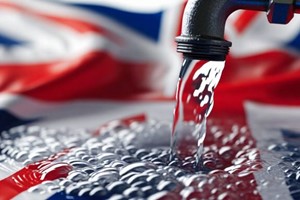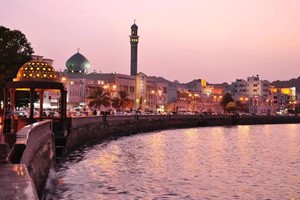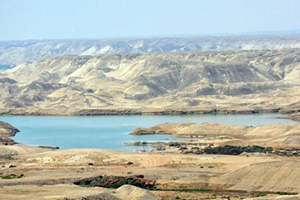Only 2.7 percent of global water is available as freshwater with an appropriate quality; out of which, only 30 percent can be applied to answer human and livestock demands according to the University of Birmingham. The global demand for fresh water has been progressively increasing during the past 60 years for many reasons including rapid population, economic growth, urbanization and industrialization, intensive agricultural practices, and environmental degradation. Additionally, the stocks of freshwater resources in some regions, like the arid and semi-arid areas of Iran, have dramatically decreased due to changes in the frequency, duration and intensity of drought events. For example, the 2007-2014 drought in Iran left many internationally renowned wetlands and lakes completely dry, significantly reduced river flows, and depleted groundwater resources.
In Iran, where agricultural systems heavily depend on irrigation, the demand for irrigation water is increasing as the available freshwater supply is becoming scarce. Irrigated agriculture is currently the major user of water resources worldwide as it consumes approximately 70 percent of the total withdrawn water. Iran’s rural economies mainly depend on agricultural products, and so, intensive irrigated agriculture is responsible for over 90 percent of freshwater consumption and will continue to be the main user of renewable water resources.
The renewable water resources in Iran show a drastic 20 percent decline over five years, declining from 130 billion cubic meters in 2013 to 105 bcm. Renewable water resources are defined as the average annual flow of rivers and recharge of aquifers generated from precipitation. According to ISNA, Iran's renewable resources were around 140 bcm in 1999 and have been rapidly decreasing ever since: 135 bcm in 2007, 130 bcmin 2013, and 105 bcm in 2017. The annual renewable water resources average is around 114 bcm, of which close to 70 bcm is exploitable.
According to the IRNA, the dominant sector in Iranian rural economy is agriculture and it accounts for almost 23 percent of employment, 13 percent of GDP, 20 percent of non-oil exports and 85 percent of raw materials used in food processing industries. Iran’s government has tried to invest sufficiently in the development of agricultural systems in order to achieve food security and increase non-oil revenues. However, high levels of water stress and increased frequency and intensity of droughts reduced the economic efficacy of this sector. Experts blame the problem mostly on poor management as about 80 to 90 percent of Iran’s accessible waters are now said to be used in agriculture, with half of that going to waste.
A lack of critical evaluation of management projects and governance systems in Iran has resulted in ineffective management strategies and outcomes, which are designed in a top-down manner. There is also a need for analytical studies on the role of local farmers’ behavior in managing land and groundwater resources in arid regions. In order to address water scarcity problems, the government have put forth projects that have been mainly technologically-oriented and lack sensitivity to the local social, cultural and biophysical context.
While diversification of agricultural products and incomes can reduce the risks of water scarcity, most Iranian farm families have no job rather than farming. Despite the major reduction of freshwater resources, the efficiency of irrigation water use has remained very low in the country and performance of water management schemes is remained poor. Faced with no other solution, the farmers deepen their wells continuously or dig new wells to withdraw groundwater from depleting aquifers. With this aggressive use of water resources without adequate control on irrigation water, agricultural production is unsustainable on the long run in arid and semi-arid regions of Iran.


Iran has used most of its groundwater reservoirs and is currently among the top groundwater users in the world. In addition, the water quality of both surface and groundwater resources have been deteriorated due to increased levels of nutrients and salinity. The soil quality and sustainability of crop production have both suffered because of the poor quality of irrigation water and limited precipitation.
Therefore, conservation of water resources and affordable and sustainable use of irrigation water is required to moderate the problem of water shortage. The decreasing of irrigation water supply and demand will pose a great risk to national food security and will increase rural poverty and forced migration. A consistent policy of rational irrigation development is an absolute necessity. The government of Iran has been diligently working on improving the productivity of irrigated agriculture since the 1960s. However, the performance of many water management schemes is far from satisfactory despite increasing institutional investments in dam construction, provision of low-interest loans and implementation of various policy measures such as subsidized agricultural water and energy use.
There is a growing need for new strategies to solve the present problems of the water and agriculture sectors as pressure on irrigation water re-sources is increasing. Authorities have started taking more action in this matter. These actions include applying drip irrigation systems and depending more on dryland farming systems instead of irrigation farming systems, running industrial and urban water treatment plants, halting plans for 14 dams in different provinces, reviving the Hoor-al-Azim lagoon over the past year and a half, allocating 231.500 US to revive Lake Urmia, river planning for a stretch of 412 kilometers, blocking 1200 wells and many others. In order to reduce agricultural activities and limit water consumption, the government needs to find ways to convince farmers to change job sectors by proposing acceptable solutions and/or alternatives.
There are also other solutions to improve water efficiency such as promoting of agro-based industries and developing integrated plans for ensuring sustainable management of irrigation water. Agro-based industries are small or medium sized enterprises that add value to agricultural products through processing them into edible or non-edible products. Agro-based industries can reduce extra pressures on water resources by comprising vertical integration towards the market as well as offer employment opportunities, enhance income and profitability within local communities. However, agro-based industries have not yet received adequate support from the government and so remain undeveloped and very basic.
Moreover, the issue of the scarcity of irrigation water can be partly solved through adopting water-efficient technologies: an integrated system that supports the three components of rational utilization of agricultural water resources, water-saving irrigation and agronomic water-saving techniques should be considered.
Consequently, in order to work with, rather than against farmers’ prevailing values and behaviors, the irrigation technology should be compliant to the arid climate, and the traditional culture and social norms of water allocation mechanisms must be considered. A thorough understanding of these challenges in addition to the main factors in the implementation of a successful irrigation management scheme in the region can enable the introduction of a more appropriate irrigation technology and increase collective agreement for the adoption of governmental policy schemes



